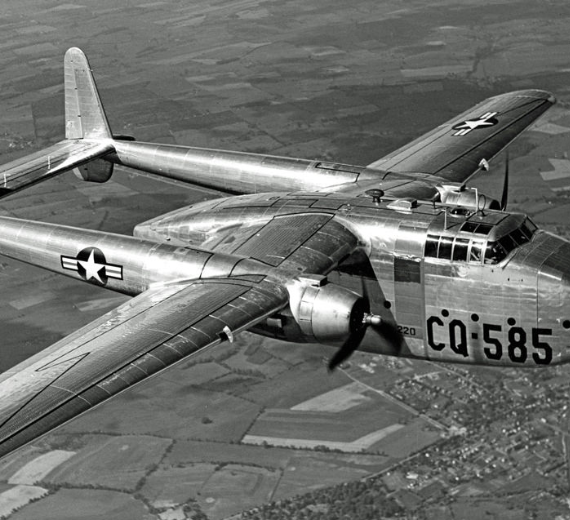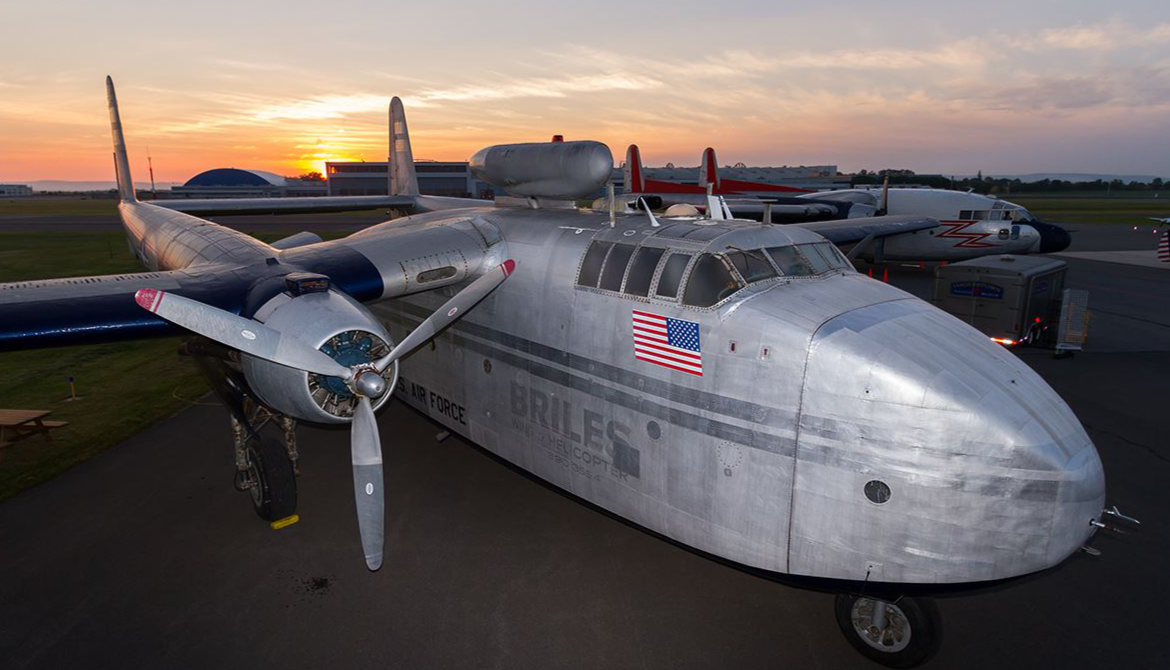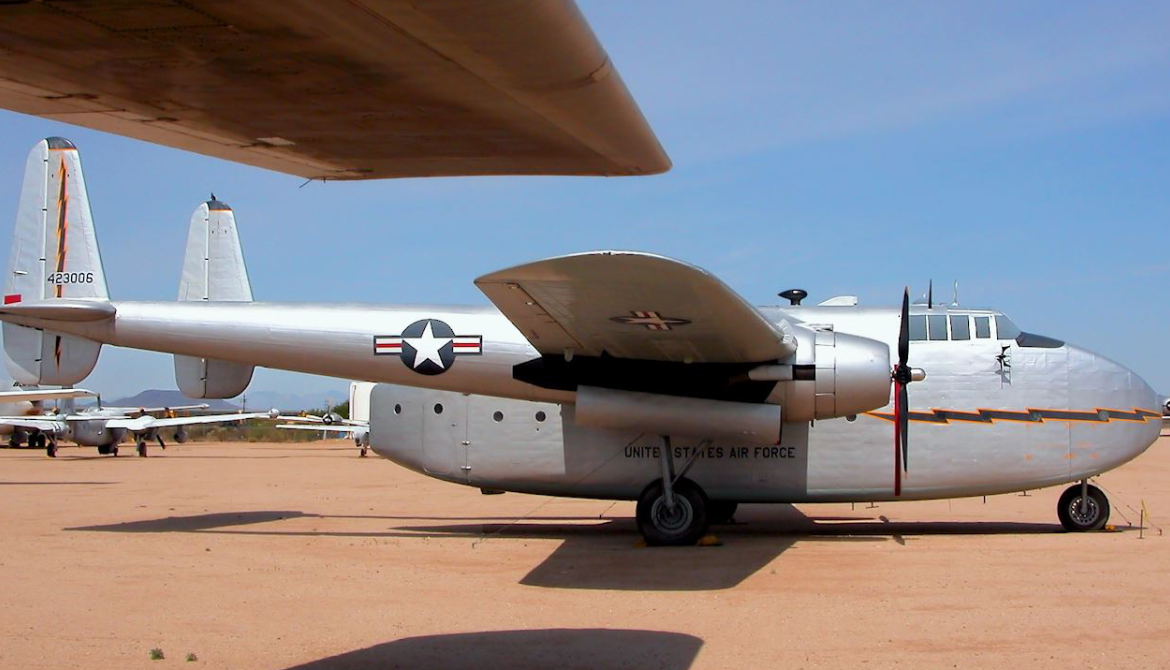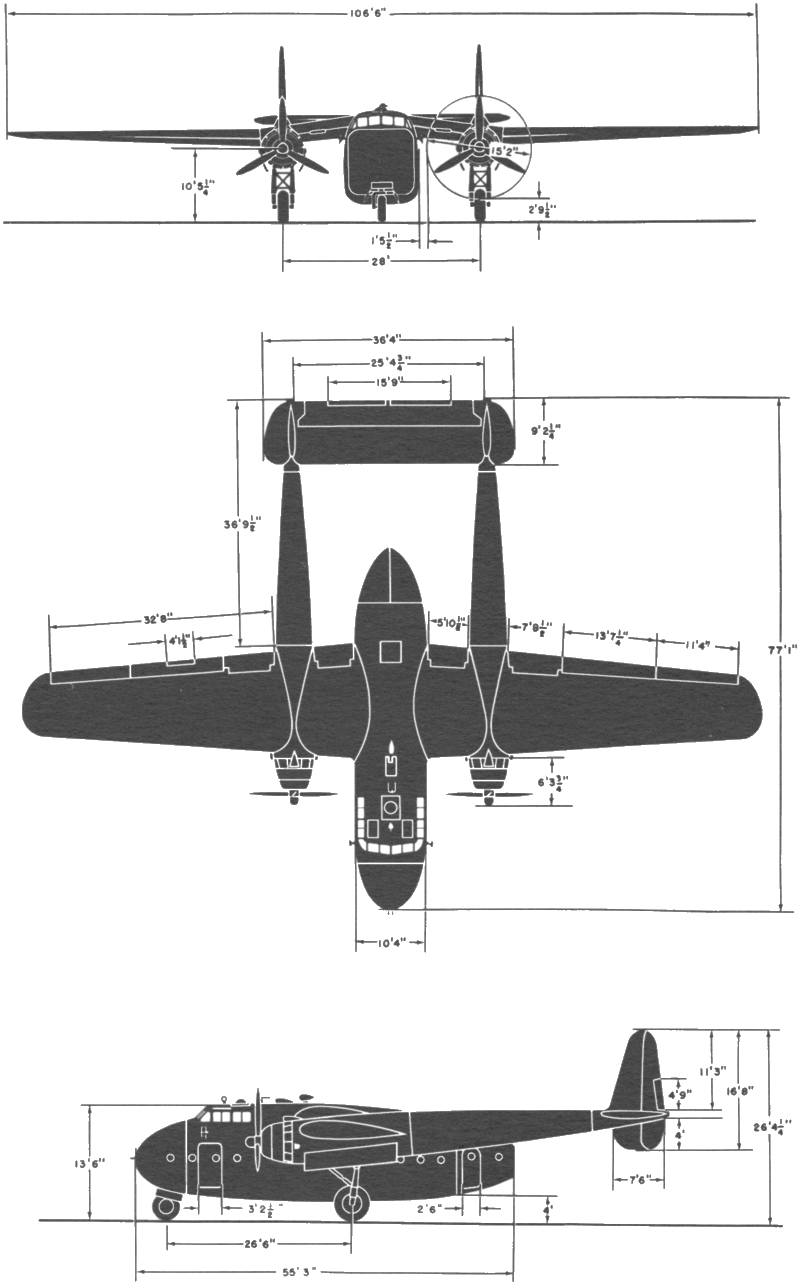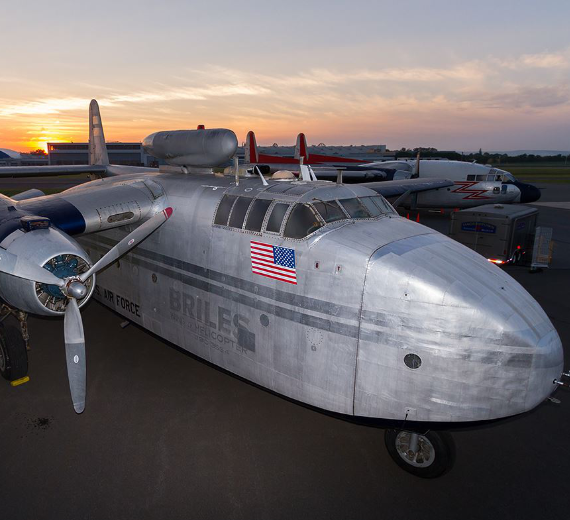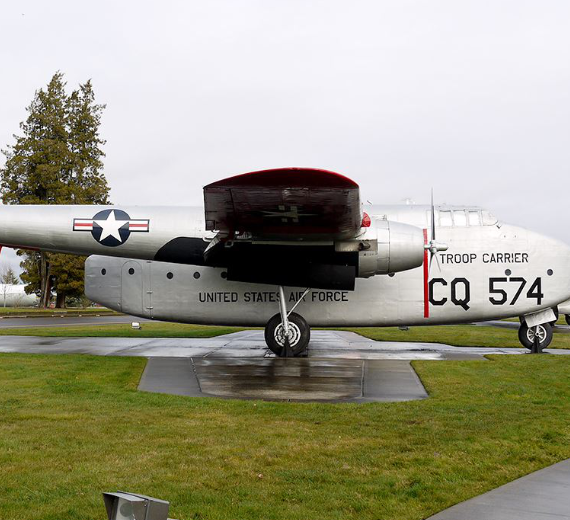Fairchild Aviation
C-82 Packet
Role Cargo and troop transport
National origin United States
Manufacturer Fairchild Aircraft
First flight 10 September 1944
Primary user United States Army Air Forces
Produced 1944–1948
Number built 223
Developed into Fairchild C-119 Flying Boxcar
.
History Fairchild Aviation Corporation.
Fairchild C-82 Packet
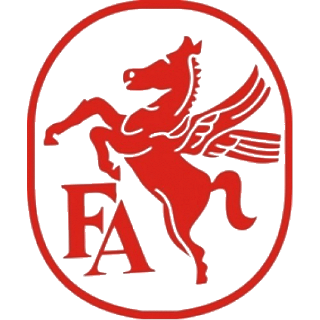
The C-82 Packet is a twin-engine, twin-boom cargo aircraft designed and built by Fairchild Aircraft. It was used briefly by the United States Army Air Forces and the successor United States Air Force following World War II.
Developed by Fairchild, the C-82 was intended as a heavy-lift cargo aircraft to succeed prewar civilian designs like the Curtiss C-46 Commando and Douglas C-47 Dakota using non-critical materials in its construction, primarily plywood and steel, so as not to compete with the production of combat aircraft. However, by early 1943 changes in specifications resulted in plans for an all-metal aircraft. The aircraft was designed for a number of roles, including cargo carrier, troop transport, parachute drop, medical evacuation, and glider towing. It featured a rear-loading ramp with wide doors and an empennage set 14 feet (4.3 m) off the ground that permitted trucks and trailers to back up to the doors without obstruction. The single prototype first flew on 10 September 1944. The aircraft were built at the Fairchild factory in Hagerstown, Maryland, with deliveries beginning in 1945 and ending in September 1948.
Operational history

Trans World Airlines Jet-Packet 1600, with Westinghouse J30-W turbojet booster engine in pod above upper fuselage (1959) 
C-82A Packet freighter of Cruzeiro (Brasil) at Santos Dumont Airport, Rio de Janeiro, in May 1972 
Packet of Taxpa Airlines (Chile) in 1972 
C-82 Packet dropping U.S. Air Force paratroops in training exercise 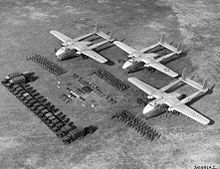
Three C-82s and various troops and cargo in 1948 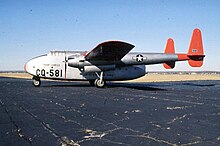
U.S. Air Force C-82 Packet The C-82A was first flown in 1944, with its initial delivery not until June 1945; as a result, only a few entered service before the end of the war. In the end, only 223 C-82As would be built, a small number relative to other wartime production cargo aircraft. Most were used for cargo and troop transport, although a few were deployed for paratroop operations or towing military gliders. A redesign rectifying the aircraft's main deficiencies, made its debut in 1947. Its subsequent improved design would result in the 1949 rollout of the Fairchild C-119 Flying Boxcar.
In 1946, the United States Postal Service explored the concept of flying post offices using highly modified C-82s, which would operate similarly to those on trains where mail would be sorted by clerks and put in bags and then transferred to trucks on landing.
0
KmCeiling
0
KmCombat RANGE
0
Km/hAircraft Speed
0
Max Crew
Photo Gallery
Fairchild Aviation Corporation.
Fairchild C-82 Packet


Fairchild Aviation Corporation
Fairchild C-82 Packet
General Info
-
-
- Crew: three
- Capacity: 42 troops or 34 stretchers
- Length: (23.50 m)
- Wingspan: (32.45 m)
- Height: (8.03 m)
- Wing area: (130.1 m2)
-
Powerplant
-
- Empty weight: 14,742 kg
- Gross weight: 22,680 kg)
- Max takeoff weight: 24,494 kg
- Fuel capacity: 9,800 L
- Powerplant: 2 × Pratt & Whitney R-2800-85 18-cylinder, two-row radial engines, 2,100 hp (1,600 kW) each
- Propellers: 3-bladed Hamilton Standard Hydromatic, 15 ft 2 in (4.62 m) diameter
-
Performance
- Maximum speed:399 km/h at 5,300 m)
- Cruise speed: (351 km/h, at (3,050 m)
- Stall speed: 137 km/h, with full flaps
- Range: 3,875 mi (6,236 km,
- Service ceiling: (6,500 m)
Armament
-
- None
.
Links to Youtube & Others
The Bf 108A first flew in 1934, followed by the Bf 108B in 1935. The Bf 108B used the substantially larger, 12.67 litre displacement Argus As 10 air-cooled inverted V8 engine. The nickname Taifun (German for "typhoon") was given to her own aircraft by Elly Beinhorn, a well-known German pilot, and was generally adopted
Fairchild Aviation Fairchild C-82 Packet
Development of the type continue and in 1935 the Bf 108B appeared with the fin and rudder having undergone modifications.
Youtube Link
Conceived as a competitive aircraft the Bf 108 would take part in the 1936 Berlin Olympics.

